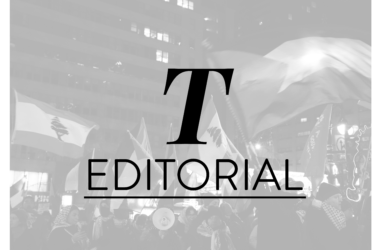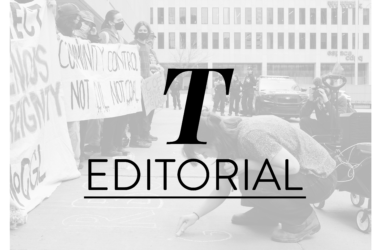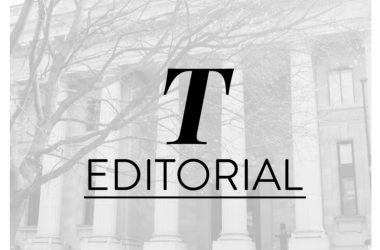Dalhousie University has recently come under fire for limiting its search for a new vice-provost student affairs to “racially visible persons and Aboriginal peoples,” in an effort to boost minority faculty representation. Critics have condemned the policy as discriminatory against white people, and argue that hiring based on race, rather than merit, is misguided. While Dalhousie’s blunt approach to race-based hiring raises some issues, such as the multitude of identities encompassed within the definition of “racially visible,” the Halifax university’s transparent approach to representative hiring is worth considering. McGill should take a cue from Dalhousie, not just in prioritizing faculty representativeness but in communicating these initiatives—and their progress—to its student body and staff.
Hiring tactics such as Dalhousie’s are implemented in an attempt to undo a longstanding legacy of white privilege in Canada. Affirmative action is not actually intended to be progressive—it’s remedial. According to Dalhousie’s 2016 census, only 11 per cent of employees identified as “racially visible,” and a mere 1.9 per cent were Indigenous. Affirmative action policies like Dalhousie’s are not designed to hurt white people. Rather, they acknowledge the systemic barriers that Indigenous peoples and racial minorities continue to face.
Dalhousie’s policy poses some issues worth addressing. First and foremost is the vague definition of “racially visible,” which collapses a multiplicity of races and lived experiences into one category. Furthermore, the histories and experiences of Indigenous peoples and racial minorities who have settled in Canada are distinct from one another, and each perspective deserves recognition in its own right. Dalhousie must unpack blanket minority identities, and ensure that a diverse set of individual experiences are represented beyond the white/non-white binary. The self-serving PR aspect of such a highly-publicized gesture also warrants skepticism.
Still, one positive aspect of Dalhousie’s transparently affirmative action-oriented policy is that its message is clear: Diversity and representation are on Dalhousie’s radar, and the university is implementing concrete steps to achieve these goals. In October 2016, McGill published a report on systemic discrimination among its faculty. The report outlined some worthwhile recommendations to achieving greater diversity and eliminating sexism and racism from the workplace. These included hiring “with particular attention to historically underrepresented groups,” and creating a senior administrator position “with a mandate to promote diversity and inclusiveness.” McGill’s report is a significant step toward improving faculty representation, since it acknowledges discrimination and outlines clear steps for solving it. However, there has been no progress update since on how the recommendations are being implemented.
Another legitimate concern with race-based hiring is that the chosen hire, no matter how qualified, may be tokenized, or seen as less competent and assumed to have been hired only on the basis of their race, rather than their qualifications. Beyond filling quotas or appearing diverse, it is important for university faculty and administration to represent the vast collection of identities within Canada and Indigenous identities. It will take much more than one targeted job posting to achieve this.
Diversifying academic leadership is essential. It is crucial for minority students to see themselves reflected in senior positions, otherwise, talented young people may be hesitant to pursue a certain career in an environment that seems unwelcoming. Increased minority representation benefits the entire student body, since it promises an education that incorporates multiple perspectives, rather than playing into typical university echo chambers reinforced by a homogenous, primarily white, male faculty.
The conversation around increasing minority representation and combatting discrimination at McGill is a vital one that must continue. McGill shouldn’t merely follow Dalhousie’s lead, it should go even further, and implement the systemic changes needed to alter a system built to privilege white people. This is a multi-faceted, long-term goal: Apart from hiring practices, building and maintaining a representative faculty also means ensuring inclusivity among masters and PhD candidates, and fostering widely-accessible opportunities from the undergraduate level. McGill’s report from 2016 outlines some viable paths to start achieving these goals—but the University needs to better communicate what it’s doing to implement these recommendations, and to make sure that the conversation on minority representation is ongoing. Moreover, students themselves must look at how they help—or hinder—representative spaces on campus, through inclusive hiring in student groups and clubs, but also through their day-to-day interactions.
Throughout Canada’s existence, white people have prospered at the expense of Indigenous peoples and people of colour. Prioritizing minority-based hiring is necessary to ensure that our university faculties are representative of Canada’s demographic makeup. There’s a whole lot of merit in that.










Nova Scotia is 91 percent white, so 11 percent visible minority exceeds the local demography. First Nations are 2 percent of Halifax’s population and 2.4 percent of the province as a whole, so Dal’s 1.9 percent is not shockingly off.
Critiquing diversity efforts without some sort of benchmark against which success or failure can be measured is empty sanctimony. Pick a target that you can justify, then finger wag.
The best way to get change is to stay positive despite facing problems. As a “white woman with the privilege” oh wait a sec – here’s a lesson in being a better Canadian trying to fight discrimination – as an immigrant feminist I do have lessons to give to Canadian Muslim (you will notice I put Canadian first – this goes a long way in any fight against discrimination). I want to know how Muslims are portrayed in Muslim made video games in the rest of the world – I really do. I also want to know how white western Christian women are treated in majority Muslim countries. Are they afforded all the freedoms all women experience here in Canada? How about the subject of lying? You know where Muslim society goes out and proclaims to the world that the Hijab is a woman’s choice akin to Communion Classes for Christians but then oh wait a sec real Muslim feminists are fighting to show the world that that statement is not true? Which version should be put in the video game? Try writing kinder words and eliminate your very own hateful writing – after all Canada is a former British colony – and no Muslims would be here if history wasn’t what it is and we didn’t fight wars for territory – ours was with the Indigenous peoples and was 100% no different than the Muslim Kings warring and capturing Jerusalem in 636 – you must call a spade a spade right? Why do Muslims dig up all this bad stuff history for others but overlook their own. I believe if you all stop doing that – you know like saying women got “the vote” in the 50’s lol – you know what the real stat is? One country got the women’s vote in the 50’s – it was Switzerland – all the other European countries it was in the late 20’s and I read a Muslim woman write this “la la land” editorial ….sigh. Long live the new true breed of Muslim feminists in Iran – love those women!!!!!!! You should make video games of them – I’d play it 4 sure!
Is this comment on the right article? Because the words “Muslim” and “video game” appear nowhere in this one. Nor is there anything about when women got the vote.
It is a fascinating idea that you put forward, that Muslims in North America were better off because of (and, you imply, insufficiently grateful for) the European colonizers’ slaughter and subjugation of the Indigenous peoples. I am not convinced that it is intellectually tenable to imagine a counter-factual where Indigenous people were left alone by the British and French imperial projects and thus free to run North America as they chose, yet in this fantasy they somehow ended up less amenable to Muslim immigration than their colonizers actually were until relatively recently. There’s no evidence, that I am aware of, of any Indigenous faith tradition in what is now Canada that made exclusive religious truth-claims, demanded epistemic hegemony, or made the souls of non-adherents its concern in any way. The sorts of sectarian concerns that led to religiously non-neutral immigration policies elsewhere in the world were not present.